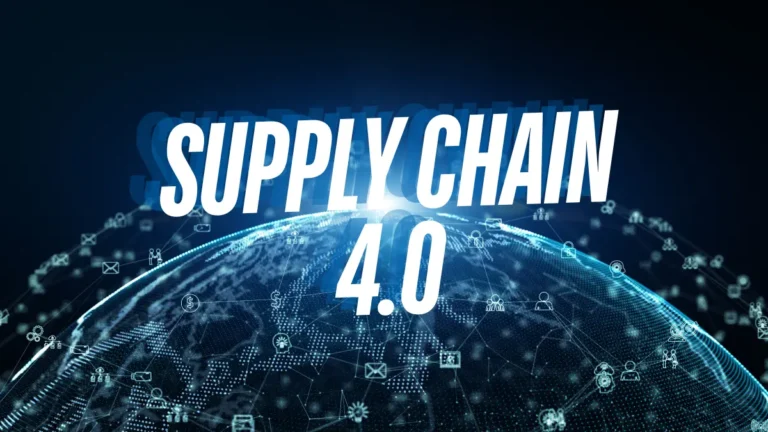The role of a supply chain analyst is growing rapidly in the U.S. job market, thanks to booming global trade and complex logistics networks. If you’re wondering how to become a supply chain analyst in 2025, this step-by-step guide covers everything—from essential skills and education to tools, certifications, and career paths.
In this guide, I’ll walk you through everything you need to know about becoming a supply chain analyst. We’ll cover the skills you need in supply chain analytics, the education path, tools to learn, and how to build a successful career in this field.
Who is a Supply Chain Analyst?
A Supply Chain Analyst plays a critical role in ensuring that goods move efficiently from manufacturers to customers. By analyzing data, identifying bottlenecks, and optimizing logistics processes, they help companies reduce costs, improve inventory accuracy, and boost on-time delivery rates.

These professionals act as the data-driven problem solvers behind every successful supply chain—monitoring performance metrics, forecasting demand, and streamlining operations to keep everything running like clockwork.
Why Become a Supply Chain Analyst?
Supply chains are the invisible engines behind nearly every product we use—from smartphones and medical devices to groceries and industrial machinery. As global commerce grows more complex, companies need experts who can turn supply chain chaos into structured efficiency. That’s where supply chain analysts come in.
Here are five compelling reasons why this role is booming in 2025:
1. High Demand and Strong Growth
According to LinkedIn Jobs (2024), the demand for supply chain analysts has grown by 22% year-over-year in the U.S. Analysts are no longer just data handlers—they’re decision-makers.
2. Competitive Salary Potential
U.S. analysts earn an average of $72,000 to $110,000 per year, with scope to grow based on tools mastered, certifications, and industry expertise.
3. Diverse Industry Opportunities
Supply chain professionals are needed in:
- E-commerce and retail
- Aerospace and automotive
- Healthcare and pharma
- Manufacturing and consumer goods
4. High-Impact, Measurable Work
Your insights directly improve how businesses operate—reducing costs, preventing delays, and improving customer experience.
5. Career Flexibility and Future Readiness
As businesses digitize and AI becomes mainstream, supply chain analytics offers long-term relevance and a clear growth path into senior roles.y competitive. It’s a role where data meets execution—and the results are measurable.
Essential Skills to Become a Supply Chain Analyst
To thrive in this role, you’ll need a blend of technical expertise, analytical thinking, and people skills. Here’s a complete breakdown:
| Skill Category | Skill | Why It Matters |
|---|---|---|
| 1. Technical Skills | Excel Mastery | Used daily for data tracking, pivot tables, dashboards, and modeling. |
| SCM Software (SAP, Oracle, Dynamics) | Helps manage inventory, procurement, shipping, and warehouse systems. | |
| Data Tools (Power BI, Tableau, SQL) | Analyze trends, create visuals, and generate actionable insights. | |
| Programming (Python, R) | Optional but powerful for automation and complex data analysis. | |
| 2. Analytical Skills | Problem-Solving | Identify bottlenecks and recommend cost-saving solutions. |
| Critical Thinking | Interpret complex datasets and make data-driven decisions. | |
| Attention to Detail | Catch small issues before they escalate into major problems. | |
| 3. Soft Skills | Communication | Present insights clearly to cross-functional teams. |
| Collaboration | Work across departments like logistics, procurement, and sales. | |
| Time Management | Prioritize tasks in a fast-paced, deadline-driven environment. |
Education Requirements to Become a Supply Chain Analyst
A solid educational foundation is essential for launching a career in supply chain analytics. Below is a clear overview of the typical academic path, valuable certifications, and the importance of gaining hands-on experience.
Education Path Overview
| Component | Details |
|---|---|
| Bachelor’s Degree | Most supply chain analysts start with a degree in Supply Chain Management, Business Administration, Industrial Engineering, or Data Analytics. |
| Recommended Majors | – Supply Chain Management: Focuses on logistics, procurement, and operations – Business Administration: Provides a broad understanding of business functions – Industrial Engineering: Emphasizes systems and efficiency – Data Analytics: Prepares you to work with data-driven tools and KPIs |
| Certifications (Optional) | – Certified Supply Chain Professional (CSCP) – Certified in Production and Inventory Management (CPIM) – Six Sigma Green/Black Belt |
| Internships and Experience | Internships offer hands-on experience, help build industry connections, and improve job readiness. They often include exposure to real-world supply chain tools and practices. |
Step-by-Step Process on How to Become a Supply Chain Analyst
Now that you know the education and skills required, let’s look at the steps you can take to become a supply chain analyst.
Step 1: Get a Relevant Degree
Start by earning a bachelor’s degree in a relevant field, such as supply chain management, business administration, or industrial engineering. Focus on classes related to logistics, operations management, and data analysis.
Step 2: Learn Key Software and Tools
Throughout your studies, take advantage of opportunities to learn supply chain management software like SAP or Oracle SCM. Additionally, build your proficiency in Excel, SQL, and data visualization tools like Power BI or Tableau. Many universities offer courses on these tools, and there are also plenty of online resources.
Step 3: Gain Experience Through Internships
An internship will give you hands-on experience in supply chain operations, helping you understand how companies manage their inventory, shipments, and suppliers. During your internship, you’ll apply the skills you’ve learned and get a feel for working in the industry.
Step 4: Pursue Certifications
While not mandatory, certifications like CSCP or CPIM can give you a competitive edge. They show employers that you have advanced knowledge in supply chain operations and management.
Step 5: Apply for Entry-Level Jobs
Once you’ve earned your degree and gained some experience, it’s time to apply for entry-level positions. Look for roles such as:
- Supply Chain Coordinator: In this role, you’ll assist with various supply chain tasks, including tracking shipments and managing inventory data.
- Logistics Analyst: You’ll analyze data related to shipping and transportation to find ways to improve delivery efficiency and reduce costs.
Step 6: Keep Learning and Growing
The supply chain field is always evolving, with new technologies and methods being introduced regularly. Stay up to date by taking online courses, attending industry conferences, and networking with professionals in the field. The more you learn, the more valuable you become in your role.
Top Tools Used by Supply Chain Analysts in 2025
In today’s fast-paced logistics environment, the right technology stack can make or break a supply chain analyst’s efficiency. Whether you’re working in e-commerce, retail, manufacturing, or healthcare, having the right tools at your fingertips is non-negotiable. Below are the most essential and in-demand software tools every supply chain analyst should master in 2025.
1. Microsoft Excel (Advanced)
Still the king of quick analysis, Excel remains a foundational tool. From dynamic dashboards to real-time inventory tracking, supply chain professionals use Excel for:
- Demand forecasting
- Inventory planning
- Pivot table-driven reports
- VBA macros for process automation
Why it matters in 2025: Despite newer platforms, Excel’s flexibility keeps it indispensable across industries .
2. Supply Chain Management (SCM) Platforms
Enterprise-grade SCM systems are the backbone of end-to-end visibility. The top tools for 2025 include:
- SAP Integrated Business Planning (IBP): Offers powerful demand planning and S&OP capabilities.
- Oracle Fusion Cloud SCM: A leading cloud-based suite for logistics, procurement, and warehouse management.
- Blue Yonder (formerly JDA): Used for AI-powered supply chain optimization.
These platforms allow analysts to coordinate real-time supply and demand data, automate procurement workflows, and manage disruptions.
3. Data Visualization Tools
Communicating insights is just as important as discovering them. Analysts lean on these tools to build digestible visuals:
- Tableau: Easy-to-use, enterprise-friendly dashboards.
- Power BI: Strong integration with Microsoft 365 and real-time analytics.
- Looker Studio (for Google Cloud users): Used by analysts working on e-commerce supply chains.
These tools are crucial when presenting KPI trends to stakeholders or building dynamic weekly reporting suites.
4. Forecasting & Scenario Planning Tools
Predictive analytics is becoming a must-have, not a luxury. In 2025, the most popular forecasting tools include:
- Kinaxis RapidResponse: Used for agile planning and risk mitigation.
- LLamasoft (acquired by Coupa): Ideal for network design and what-if simulations.
- Anaplan: Known for collaborative planning across finance and supply chain teams.
These platforms help supply chain analysts model uncertainty, plan demand fluctuations, and mitigate disruptions before they happen .
5. ERP Systems (Enterprise Resource Planning)
ERP systems serve as the central nervous system of an organization. Analysts must be familiar with:
- SAP S/4HANA
- Oracle NetSuite
- Microsoft Dynamics 365
These tools unify procurement, finance, manufacturing, and supply chain operations into a single source of truth.
6. SQL and Python
While not traditional “tools,” programming languages like SQL and Python have become essential:
- SQL is used for querying large operational datasets (inventory logs, order transactions, logistics data).
- Python helps with automating repetitive tasks and advanced analytics like route optimization or demand modeling.
Most Fortune 500 supply chain analyst roles now list SQL and/or Python as core requirements.
Building a Career as a Supply Chain Analyst
Once you’ve started your journey as a supply chain analyst, the opportunities for growth are vast. Here’s a roadmap of how your career might progress:
1. Entry-Level Roles
After completing your degree and possibly an internship, you’ll begin in an entry-level role such as:
- Supply Chain Coordinator: In this role, you’ll help manage day-to-day operations, such as tracking shipments, managing inventory, and coordinating with suppliers.
- Logistics Analyst: You’ll analyze data related to transportation and logistics, helping companies optimize routes and reduce costs.
These roles give you hands-on experience with the flow of goods and data, laying a strong foundation for your career.
2. Mid-Level Roles
With 2-5 years of experience under your belt, you can move into mid-level roles, such as:
- Supply Chain Analyst: By this stage, you’ll be comfortable analyzing data, making recommendations, and working with different departments to improve supply chain performance. You’ll look for ways to reduce costs, improve delivery times, and streamline operations.
- Inventory Manager: In this role, you’ll focus on maintaining optimal inventory levels and ensuring products are available when and where they are needed.
At this stage, you may also consider getting additional certifications (like CPIM or Six Sigma) to enhance your credentials and improve your job prospects.
3. Senior and Management Roles
As you gain more experience and develop your skills, you can move into senior or management roles, such as:
- Supply Chain Manager: In this position, you’ll oversee the entire supply chain operation, from procurement to logistics, ensuring that everything runs smoothly. You’ll manage teams and make high-level strategic decisions about sourcing, production, and distribution.
- Operations Manager: This role involves overseeing broader business operations, including the supply chain. You’ll work closely with other departments to ensure that all aspects of the business are aligned and functioning efficiently.
- Director of Supply Chain: At the executive level, you’ll be responsible for the overall performance of the company’s supply chain, making decisions that impact the entire organization. You’ll lead supply chain strategy, negotiate with key suppliers, and manage risks.
Challenges Supply Chain Analysts Face
As a supply chain analyst, you’ll encounter various challenges. Here are a few common ones and how to tackle them:
1. Data Overload
Supply chains generate a lot of data, and it can be overwhelming to analyze all of it. The key is to focus on the most important metrics—such as inventory levels, shipping times, and costs—and use the right tools to organize and visualize the data.
2. Supply Chain Disruptions
Disruptions, like supplier delays or transportation issues, are common in supply chains. A big part of your job will be to anticipate these problems by analyzing trends and creating contingency plans. Learning how to run what-if scenarios using forecasting tools will help you prepare for unexpected challenges.
3. Communication Between Departments
Supply chain analysts work with many different teams, from warehouse staff to executives. Sometimes, there can be miscommunication between departments. To prevent this, make sure you’re clear and concise when sharing your data findings, and be open to feedback from all parties.
Career Outlook and Opportunities
The demand for supply chain analysts continues to grow as companies look to improve their operations, cut costs, and manage global supply chains more effectively. Several trends are contributing to the increasing demand:
1. E-commerce Growth
With the rise of online shopping, companies need supply chain analysts to optimize logistics and delivery systems. The faster and more efficiently products can be delivered to customers, the better.
2. Technological Advancements
New technologies, like artificial intelligence (AI) and machine learning, are changing the way supply chains operate. Companies need skilled professionals who can use these technologies to analyze data and make informed decisions.
3. Global Supply Chains
As supply chains become more global, managing suppliers, shipments, and regulations across different countries becomes more complex. Supply chain analysts play a crucial role in ensuring that products move smoothly across borders and that companies meet international standards.
Conclusion: Your Path to Becoming a Supply Chain Analyst
Becoming a supply chain analyst is an exciting and rewarding career that combines data analysis, problem-solving, and real-world impact. By following the steps outlined in this guide—earning the right degree, building key skills, gaining hands-on experience, and continuing to learn and grow—you can successfully build a career in this dynamic field.
Here’s a recap of your journey:
- Education: Get a degree in supply chain management, business administration, or a related field.
- Skills Development: Build your technical, analytical, and soft skills—learn Excel, supply chain software, data analysis tools, and how to communicate effectively.
- Practical Experience: Gain hands-on experience through internships or entry-level jobs to understand how supply chains work in real-world settings.
- Certifications: Boost your resume with certifications like CSCP or Six Sigma to enhance your expertise.
- Career Progression: Start in entry-level roles, then move up to supply chain analyst positions and beyond, with opportunities to become a manager or director in the field.
By taking these steps, you’ll be well on your way to becoming a successful supply chain analyst, helping companies optimize their operations and make smarter, data-driven decisions. Good luck on your journey!







3 Comments